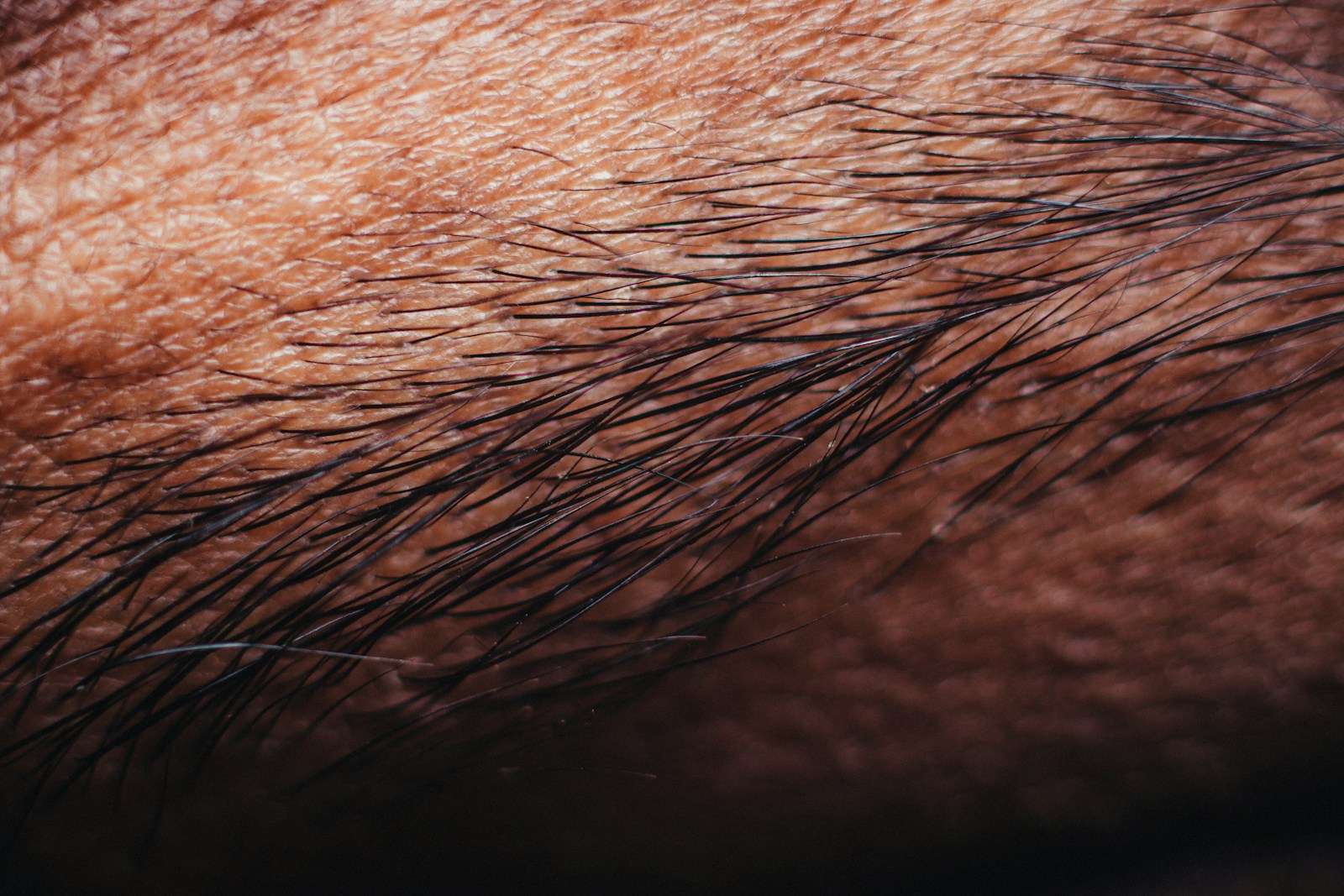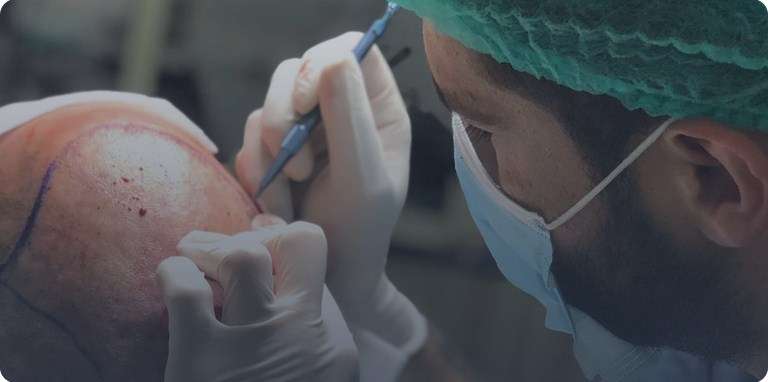Immediate Post-Operative Care
Instructions for the first few hours after the surgery
Immediately after your hair transplant surgery, it's crucial to follow these care instructions to ensure proper healing and minimize any discomfort:
İçindekiler
- Gently touch your transplanted area to avoid dislodging newly implanted grafts.
- Avoid touching or scratching your scalp unnecessarily.
- Take prescribed pain medications as directed by your surgeon to manage any discomfort or pain.
Head positioning and sleeping
To promote optimal healing and prevent any damage to the newly transplanted hair follicles, it's essential to:
- Sleep with your head elevated at a 45-degree angle for the first few nights after surgery.
- Avoid lying directly on the transplanted area when sleeping.
Medication and pain management
Follow your surgeon's instructions regarding medication intake and pain management, including:
- Taking prescribed antibiotics as directed to prevent any potential infections.
- Avoiding any blood-thinning medications or supplements unless approved by your surgeon.
- Applying any topical creams or ointments as instructed for faster healing.
Avoiding direct sunlight and excessive heat exposure
To protect the treated area from potential damage and ensure successful healing:
- Stay out of direct sunlight for the first few weeks after surgery.
- Wear a hat or use sunscreen with a high SPF when going outside.
- Avoid exposing your scalp to excessive heat, such as saunas, steam rooms, or hot showers.
By adhering to these post-operative care instructions, you can optimize the healing process and achieve the best possible hair transplant results. Remember to follow up with your surgeon for any additional guidance or concerns.
Washing and Cleaning the Transplanted Area
After undergoing a hair transplant procedure, it's important to properly care for the transplanted area to ensure successful healing and optimal results. Here is a step-by-step guide to help you with post-operative care instructions for your hair transplant:
Step-by-step guide for cleaning the transplanted area
- Gently rinse the transplanted area with lukewarm water on the first day after the procedure.
- Apply the recommended shampoo to your hands and create a lather.
- Gently massage the lather into the transplanted area using your fingertips.
- Rinse thoroughly with lukewarm water, making sure to remove any shampoo residue.
- Pat dry the transplanted area using a clean, soft towel.
Recommended shampoo and technique
It's important to use a mild, pH-balanced shampoo that is free from harsh chemicals or fragrances. Your hair transplant surgeon will usually provide you with a recommended shampoo that is specifically formulated for post-operative care. When applying shampoo, avoid scrubbing or rubbing the transplanted area forcefully to prevent dislodging grafts.
Frequency of washing
During the first week after your hair transplant, you should wash your hair twice a day using the recommended shampoo and technique mentioned above. After the first week, you can gradually reduce the frequency to once daily for the next two weeks. Following that, you can return to your normal hair washing routine.
By following these post-operative care instructions for your hair transplant, you can promote proper healing and accelerate your hair growth process. Remember to consult with your hair transplant surgeon for personalized instructions based on your specific situation.
Scab Care
After undergoing a hair transplant procedure, proper post-operative care is crucial for a successful recovery. One important aspect of care is managing the scabs and crusts that may form on the scalp. Here are some instructions to follow for effective scab care:
Avoiding picking or scratching
It is important to resist the urge to pick or scratch at the scabs. Doing so can disrupt the healing process and may result in scarring or even infection. It is essential to be gentle with your scalp and refrain from any actions that could cause harm.
Moisturizing and gentle massage
Keeping the scalp moisturized is key to preventing the scabs from drying out and becoming more difficult to manage. Apply a light moisturizer or recommended ointment as directed by your surgeon to keep the area hydrated. Additionally, gently massaging the scalp in circular motions can help promote blood circulation and further aid in healing.
Following these instructions for managing scabs and crusts will help ensure a smoother recovery process after your hair transplant procedure. Remember to consult with your surgeon for specific advice tailored to your individual needs. By taking proper care of your scalp, you can enhance the healing process and achieve optimal results from your hair transplant.
Physical Activity and Exercise
After a hair transplant surgery, it is important to take care of the newly transplanted hair to ensure successful recovery and optimal results. This includes considering the impact of physical activity and exercise on the healing process.
Guidelines for resuming physical activities
-
Follow your surgeon's instructions: Every individual may have different healing timelines and specific instructions from their surgeon. It is crucial to adhere to these guidelines for a safe recovery.
-
Start slowly: Gradually introduce physical activities into your routine. Begin with light exercises and gradually increase the intensity over time as directed by your surgeon.
Restrictions on strenuous exercise
-
Avoid high impact activities: For a certain period after the surgery, it is advisable to avoid activities that involve excessive sweating, heavy lifting, or intense physical strain. These activities can put pressure on the healed grafts and potentially affect their growth.
-
Avoid contact sports: Sports that involve physical contact or risk of injury should be avoided during the initial months of recovery to prevent damage to the transplanted hair follicles.
Protecting the transplanted area during workouts
-
Wear protective headgear: If you plan on participating in activities that could pose a risk to your transplanted hair, such as cycling or skiing, wear a helmet or headgear to protect the area.
-
Avoid direct contact: During workouts, avoid any direct pressure or rubbing on the transplanted area. Be cautious while using towels or headbands that could potentially displace or damage the grafts.
Remember, it is essential to consult with your surgeon about your specific post-operative care instructions and any concerns you may have regarding physical activity or exercise after a hair transplant. Following these guidelines will help ensure a smooth recovery and increase the chances of achieving your desired results.
Diet and Nutrition
Recommended diet for optimal healing and hair growth
Following a hair transplant, it is essential to pay attention to your diet and nutrition to promote optimal healing and hair growth. Here are some post-operative care instructions to keep in mind:
-
Stay Hydrated: Drink plenty of water throughout the day to keep your body hydrated and support the healing process.
-
Eat Nutrient-rich Foods: Include a variety of fruits, vegetables, lean proteins, and whole grains in your diet. These foods provide essential vitamins, minerals, and antioxidants that are crucial for hair growth.
-
Consume Adequate Protein: Protein is the building block of hair. Make sure to eat enough protein-rich foods such as fish, chicken, eggs, nuts, and legumes to promote healthy hair growth.
-
Avoid Excessive Alcohol and Caffeine: These substances can dehydrate your body and hinder the healing process. Limit your consumption of alcohol and caffeine during the post-operative period.
-
Avoid Smoking: Smoking restricts blood flow, which can negatively impact healing and hair growth. It is best to avoid smoking altogether during this time.
-
Minimize Processed Foods: Processed foods are often high in unhealthy fats, sugar, and salt. These can impede healing and affect hair growth. Opt for whole, unprocessed foods whenever possible.
Remember that each individual may have specific dietary needs or restrictions, so it is important to consult with your healthcare professional or surgeon for personalized advice on post-operative care instructions after a hair transplant. By nourishing your body with the right nutrients, you can support the healing process and achieve optimal results in hair regrowth.
Avoiding Harmful Substances
After undergoing a hair transplant procedure, it is crucial to follow the post-operative care instructions provided by your surgeon. These instructions are designed to ensure optimal healing and promote successful hair growth. One of the key aspects of post-operative care is avoiding substances that can hinder the healing process. Here are a few instructions to keep in mind:
Smoking and alcohol consumption
It is advisable to abstain from smoking and consuming alcohol for at least a week after your hair transplant surgery. Both smoking and excessive alcohol consumption can interfere with the body's natural healing process and slow down the growth of transplanted hair follicles.
Avoiding certain medications and supplements
Certain medications and supplements may also hinder healing after hair transplant surgery. It is essential to avoid blood-thinning medications, such as aspirin and ibuprofen, as these can increase the risk of bleeding. Additionally, herbal supplements like ginkgo biloba and garlic supplements should be avoided, as they can interfere with blood clotting.
By following these instructions and avoiding harmful substances, you can help ensure a smooth recovery process and enhance the success of your hair transplant procedure. Remember to consult with your surgeon for specific guidelines tailored to your individual needs.
Long-Term Hair Care
Tips for maintaining the transplanted hair in the long run
After undergoing a hair transplant surgery, it's crucial to take proper care of your new hair to ensure its long-term success and appearance. Here are some essential tips to keep in mind:
Proper hair washing and grooming techniques
-
Gentle Cleansing: Use a mild shampoo recommended by your surgeon to gently wash your hair. Avoid vigorous rubbing or scrubbing, as it can dislodge the newly transplanted hairs.
-
Avoid Hot Water: Opt for lukewarm water while washing your hair to prevent unnecessary stress on the newly implanted grafts.
-
Pat Dry: After washing, pat dry your hair with a soft towel. Avoid rubbing or vigorously drying, as it may cause damage or dislodgement of the grafts.
Protecting the hair from damage and breakage
-
Avoid Heat Styling: Minimize the use of hot styling tools like curling irons or straighteners, as excessive heat can damage the transplanted hair.
-
Avoid Tight Hairstyles: Refrain from pulling your hair tightly or using accessories that put excessive pressure on the grafts. Opt for loose hairstyles that don't strain the newly transplanted hair.
-
Protect from Sun Exposure: Shield your hair from direct sun exposure by wearing a hat or using sunscreen specifically designed for the scalp. UV rays can damage the fragile transplanted hair.
By following these post-operative care instructions, you will give your transplanted hair the best chance of success and ensure that it grows and thrives in the long run. Remember to consult with your surgeon for personalized advice based on your specific procedure and needs.




